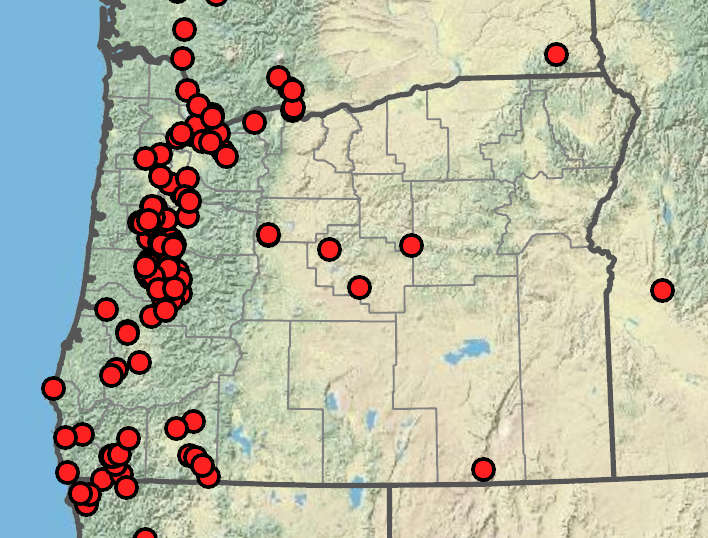Juncus occidentalis
prairie rush, western rush
thin and wiry;
blade flat and slightly inrolled;
auricles soft and thin distally, 0.1– 1.1 mm; dull, rounded or acute; dirty white.
cymes, 1–7 cm;
bractlets subtending flowers blunt to acute.
tepals 6, brown-striped;
tepal tips acuminate;
stamens 6;
filaments 0.6–1.1 mm;
anthers 0.4–0.9 mm;
styles 0.1–0.3 mm.
2.7–4.5 mm; shorter than the tepals, brown;
apex usually truncate to slightly notched, strongly ridged or crested distally, 1-chambered.
0.4–0.6 × 0.2– 0.25 mm, apiculate.
=80.
Juncus occidentalis
Wet prairies, swales, shores, riparian zones, seeps, wet meadows, balds, vernal pools, ditches. 0–2100 m. CR, ECas, Est, Sisk, WV. CA, WA; British Columbia, Baja California Norte, Mexico. Native.
Juncus occidentalis is a western Oregon sister species to J. confusus, separable by the construction of the capsules (threechambered in J. confusus, one-chambered in J. occidentalis).
Peter Zika
- Local floras:
BC,
CA,
OR,
WA
- Local Web sites:
CalFlora,
CalPhotos,
Flora NW,
PNW Herbaria
WildflowerSearch
iNaturalist (observations)
USDA Plants Database
- LBJ Wildflower Center
- SEINet
- Plants of the World Online
- Encyclopedia of Life
- Wikipedia
- Google Image Search

